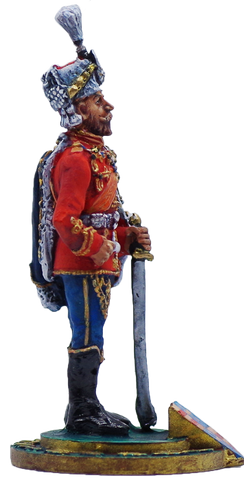
Ernst Gunther II
Duke of Schleswig-Holstein
Ernst Gunther II, Duke of Schleswig-Holstein (11 August 1863 – 22 February 1921), was a son of Frederick VIII, Duke of Schleswig-Holstein and Princess Adelheid of Hohenlohe-Langenburg. He inherited his father's title as titular third duke of Schleswig-Holstein. Ernst Günther was the third son of Duke Friedrich VIII of Schleswig-Holstein-Sonderburg-Augustenburg (1829–1880) and his wife Princess Adelheid of Hohenlohe-Langenburg (1835–1900), the daughter of Prince Ernst I of Hohenlohe-Langenburg (1794–1860) and his wife Feodora zu Leiningen (1807–1872). Ernst Günther's sister was the Empress Auguste Victoria (1858–1921). He inherited the title of (titular) Duke of Schleswig-Holstein from his father; He was now the head of this branch of the family. After his father's death, the Emperor and King Wilhelm ordered that he should be addressed as "Your Highness" when dealing with authorities. He had been a member of the Borussia Bonn Corps since 1884. In the summer of 1890 the Duke was appointed to the general staff and promoted to captain in 1891. In 1895 he was promoted to major. The Duke made a name for himself because of his excessive, scandalous sex life at the

time, which also included visits to brothels and which earned him the nickname “Duke Rammler” at court. In 1893, to the horror of the imperial couple in Paris, Ernst Günther proposed marriage to the widowed Duchess Maria Letizia of Aosta, née Princess Bonaparte, which the German ambassador Count Münster was able to thwart. A year later he toyed with the idea of marrying Princess Helene of Orleans, which was once again met with resistance from the imperial couple. In 1896, an affair between Ernst Günther and the Baroness Johanna von Spitzemberg, the daughter of the salonnière Hildegard von Spitzemberg, caused a stir at the imperial court. The planned marriage of the two, which was considered inappropriate according to dynastic conventions, failed due to the imperial couple's categorical objections. On 2 August 1898 in Coburg, Saxe-Coburg and Gotha, he married Princess Dorothea of Saxe-Coburg and Gotha, daughter of Prince Philipp of Saxe-Coburg and Gotha and Princess Louise of Belgium. The grandfather of the bride, King Leopold II, did not attend the wedding but sent the Grand Cordon of the Order of Leopold as wedding gift. The couple had no children.

The Leib-Garde-Hussar-Regiment was a cavalry unit of the Prussian Army that existed from 1815 to 1919 and belonged to the Guard Corps. The regiment was set up on February 21, 1815 (Foundation Day) as a Guard Hussars Regiment from the Guard Hussars Squadron of the Light Guard Cavalry Regiment and three squadrons of the East Prussian National Cavalry Regiment. The association was initially stationed in Berlin and from 1829 in Potsdam. With the accession of Kaiser Wilhelm II to the throne, he appointed himself regimental chief on June 19, 1888 and renamed the association the Leib-Garde-Hussar-Regiment.
The House of Schleswig-Holstein-Sonderburg-Augustenburg (Danish: Slesvig-Holsten-Sønderborg-Augustenborg) was a branch of the dukes of Schleswig-Holstein-Sonderburg of the House of Oldenburg. The line descended from Alexander, Duke of Schleswig-Holstein-Sonderburg. Like all of the secondary lines from the Sonderburg branch, the heads of the House of Schleswig-Holstein-Sonderburg-Augustenburg were first known as Dukes of Schleswig-Holstein and Dukes of Sonderburg. The family took its name from its ancestral home, Augustenborg Palace in Augustenborg, Denmark. The branch originated from Ernest Günther, a member of the ducal house of Schleswig-Holstein (its branch of Sønderborg) and a cadet of the royal house of Denmark. He was the third son of Alexander, 2nd Duke of Sonderborg (1573–1627), and thus a grandson of John the Younger (1545–1622), the first duke, who was a son of King Christian III of Denmark. In the early 19th century, the Danish royal line started to go extinct. The Duke of Augustenburg was the next male-line heir to the royal house, though not descended in male line from Frederick III of

Denmark and Norway. This made the duke a player in the convoluted Schleswig-Holstein Question, as well as a candidate in the Danish succession. Frederik August of Augustenburg attempted to proclaim himself reigning Duke Frederick VIII of Schleswig-Holstein in 1864, upon the final extinction of the senior branch of the Danish kings. His daughter, Augusta Victoria of Schleswig-Holstein, became German Empress as consort of Wilhelm II.
Awards: Collar and sash of the Order of the Black Eagle, Stars of the Order of the Red Eagle, the Order of Leopold, the Royal Order of Saint Hubert and the Order of Saint Stephen.






